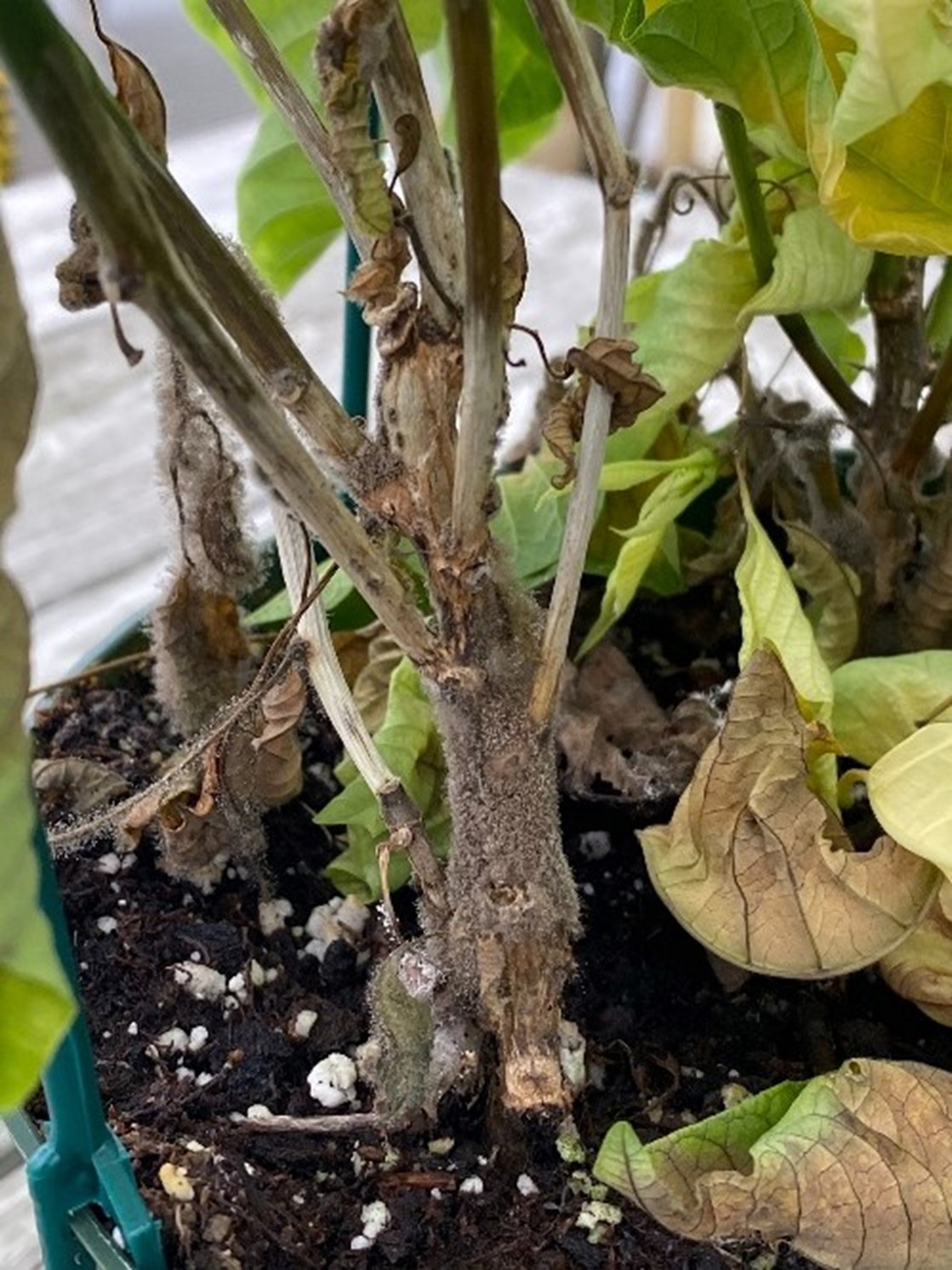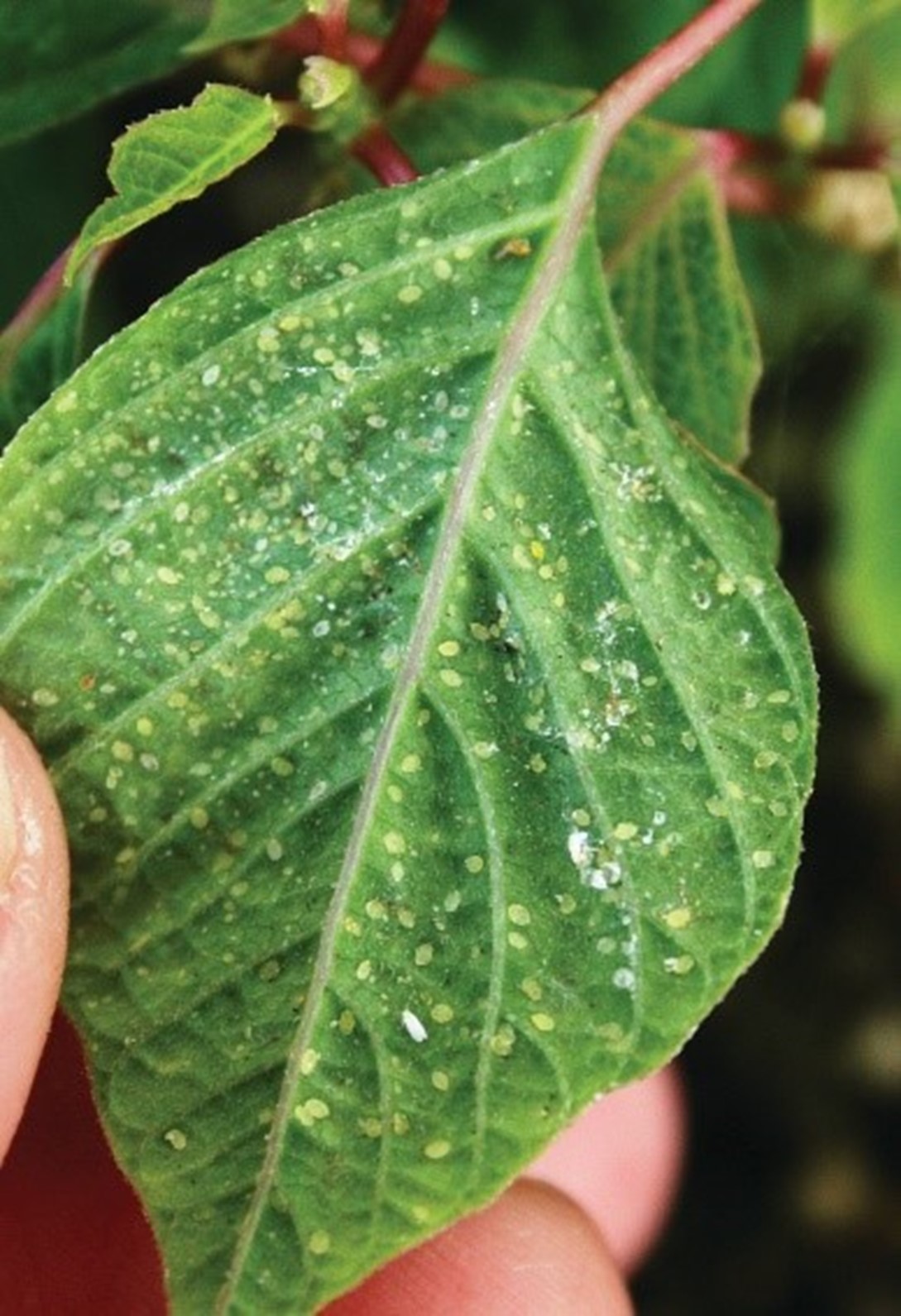Take an Agronomic Approach for Holiday-Ready Poinsettias
-
August 08, 2025
-
Share this article:
- SHARE:
As summer winds down and fall draws near, it is time for growers to turn their attention to poinsettia production. These seasonal crops known for their festive spirit come with a variety of production challenges, especially when it comes to insects and diseases.
From propagation to finish, poinsettias are highly vulnerable, and without careful monitoring, problems can escalate quickly. To ensure a successful crop, it is essential to implement appropriate cultural practices and proven protection strategies to help safeguard plant health throughout the production cycle.
Common Threats
Botrytis
 Botrytis on poinsettia stem, Nancy Rechcigl, 2022
Botrytis on poinsettia stem, Nancy Rechcigl, 2022This common disease is a big threat to plant health during propagation, as well as at the end of production when plants are ready to ship. It is particularly threatening when leaves are wet for four or more hours, or humidity levels are greater than 85%.
Early signs of infection result in water-soaked spots on foliage. Once established, gray mold will quickly spread throughout the crop and production area.
To manage disease development:
- Maintain a clean, dry growing environment
- Regularly scout, looking closely for symptoms such as small, light brown spots on flowers, and v-shaped, tan-brown lesions on foliage and overall plant wilting
- Ensure proper and horizontal air flow
- Keep humidity low by heating and venting
Whiteflies
 Whitefly damage on poinsettia, Syngenta, 2021
Whitefly damage on poinsettia, Syngenta, 2021This insect damages poinsettias by inserting its piecing, sucking mouthparts into the phloem to extract plant sap, significantly impacting plant vigor. When scouting, be sure to check the undersides of leaves for nymphs and eggs and signs of black sooty mold, which is honeydew secretion from adult whiteflies. Development from eggs to mature whiteflies can occur as quickly as 21 days, so populations will build quickly.
To prevent whiteflies from establishing populations:
- Remove weeds from production areas to minimize sites of contamination as whiteflies feed on numerous hosts
- Carefully inspect new shipments of plants for nymphs and mature whiteflies
- Use screens in greenhouses to protect growing plants
Follow Best Practices
Implementing cultural practices alongside regular scouting is critical for early pest detection. One of the key preventive actions growers can take is to implement an agronomic program before damage occurs. Consider the Poinsettia Agronomic program, which rotates products such as Mainspring® GNL insecticide, which has strong activity against poinsettia threats.
Mainspring GNL is a powerful tool that protects crops from chewing and sucking insects like whiteflies, and offers growers reliable, extended protection as part of a preventive pest management strategy.
To learn more about the tools available for preventing damaging pests, visit GreenCastOnline.com/Ornamentals.
All photos are either the property of Syngenta or are used with permission.
© 2025 Syngenta. Important: Always read and follow label instructions. Some products may not be registered for sale or use in all states or counties and/or may have state-specific use requirements. Please check with your local extension service to ensure registration status and proper use. GreenCast®, Mainspring® and the Syngenta logo are trademarks of a Syngenta Group Company. All other trademarks are the property of their respective third-party owners.